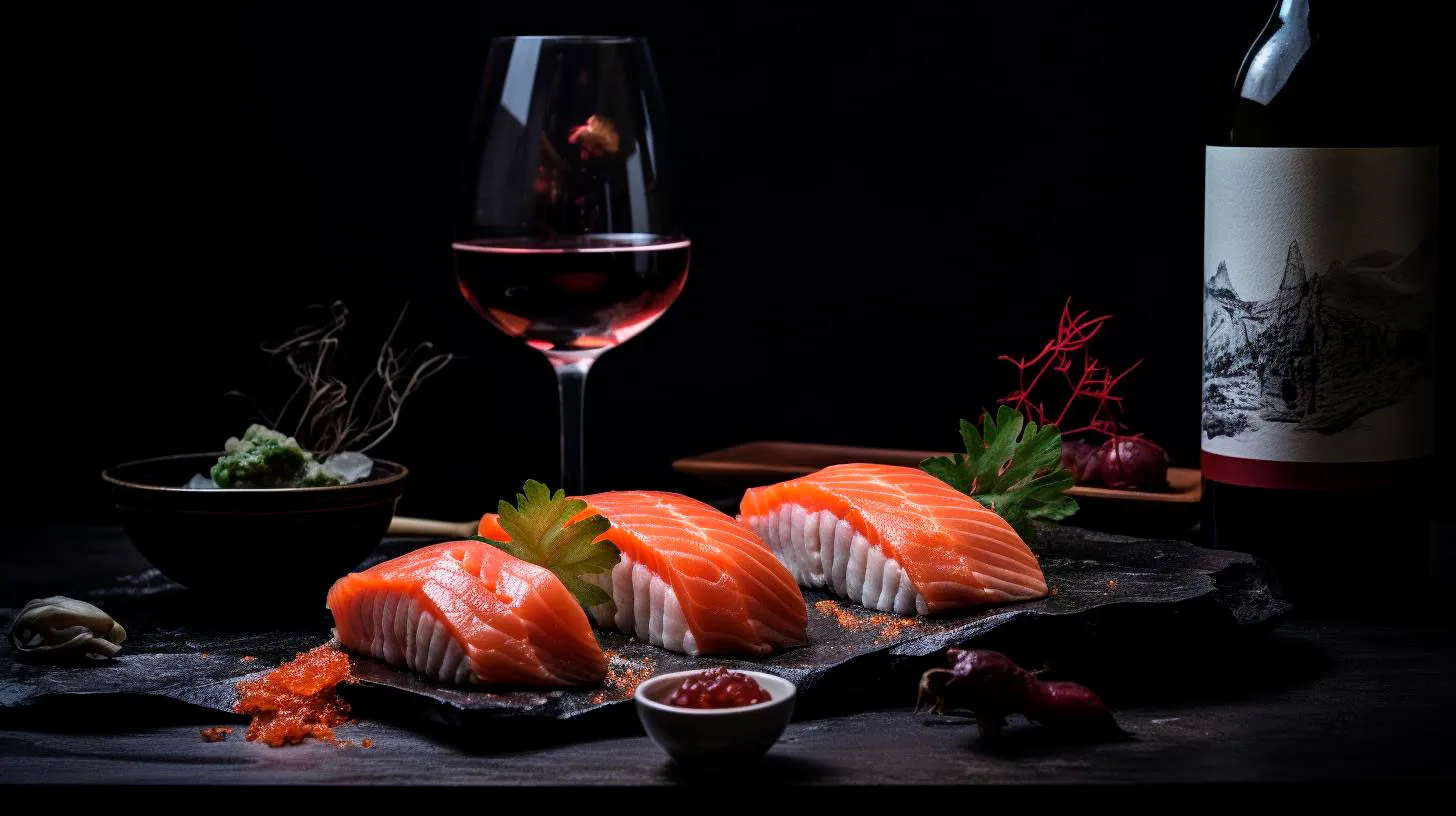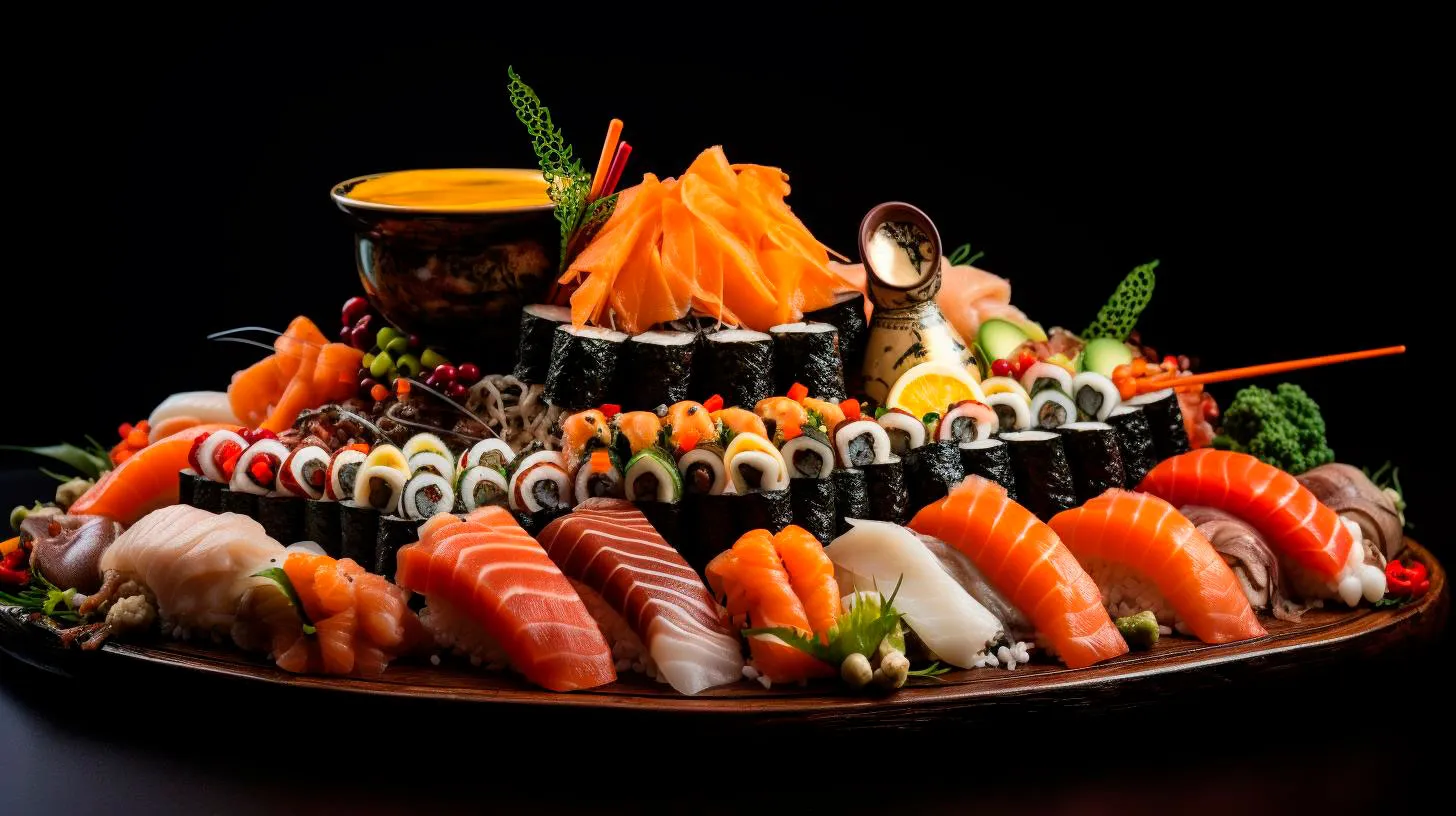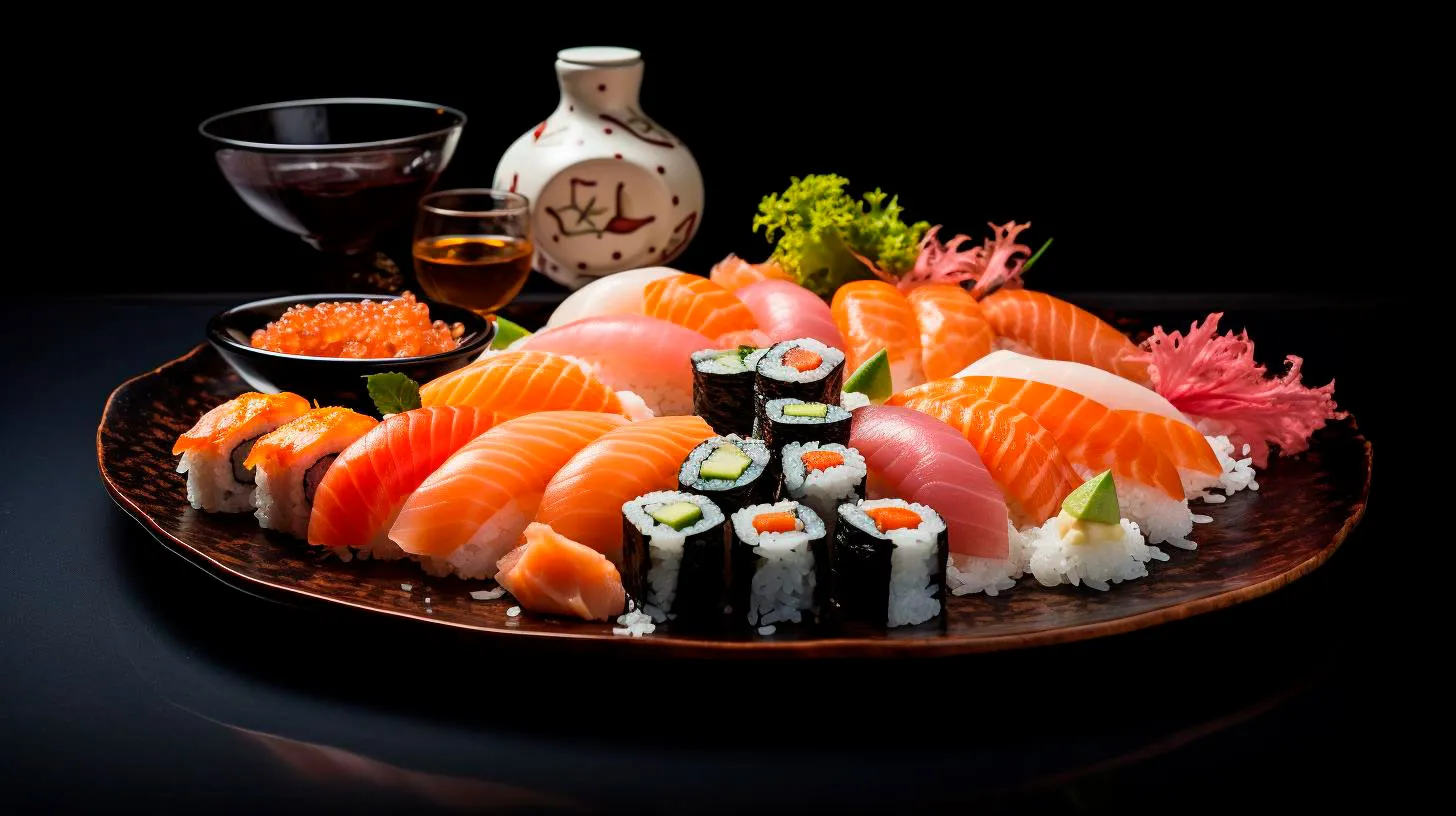Exploring the Intricate Craftsmanship of Japanese Tea Ceramics
In this article, we will delve into the world of Japanese tea ceramics and explore the intricate craftsmanship that goes into creating these extraordinary pieces of art.
The Art of Japanese Tea Ceramics
Japanese tea ceramics are meticulously crafted, with artisans dedicating years to perfecting their skills and techniques. Each ceramic piece is carefully handcrafted, showcasing the harmonious marriage of form and function. The designs often draw inspiration from nature, with motifs reflecting the seasons.
The Process of Creating Japanese Tea Ceramics
The creation of Japanese tea ceramics involves several intricate steps, including:
- Clay Selection: Artisans carefully choose the type of clay that best aligns with their artistic vision, as different clays produce varying textures, colors, and finishes.
- Shaping: The clay is meticulously shaped by hand or, in some cases, thrown on a potter’s wheel to create the desired form and size of the chawan.
- Glazing: The chawan is then covered with a layer of glaze, enhancing its aesthetics and durability. Various glazing techniques are used to achieve different effects, such as crackling or a glossy finish.
- Kiln Firing: The chawan is carefully placed in a kiln to undergo the firing process, which can take several hours or even days. The temperature and duration of firing greatly influence the final appearance and strength of the ceramic piece.
- Decoration: Some chawan are adorned with intricate hand-painted designs, while others feature subtle textures or natural patterns created by the firing process itself.
The Significance of Japanese Tea Ceramics
Japanese tea ceramics hold profound cultural and historical significance. They are not merely vessels for drinking tea but are considered works of art in their own right. Here are some key takeaways regarding the significance of Japanese tea ceramics:
- Ritual and Meditation: The act of brewing and drinking tea in a meticulously crafted chawan is deeply meditative and holds spiritual significance in Japanese tea ceremonies.
- Harmony and Balance: Japanese tea ceramics embody the concept of wabi-sabi, appreciating beauty in imperfection and finding harmony in natural asymmetry.
- Timeless Elegance: The classic designs of Japanese tea ceramics have transcended time, with many pieces exhibiting timeless elegance that resonates with people of various cultures.
- Journey of Mastery: The craft of Japanese tea ceramics is a lifelong journey of mastery, with artisans continuously honing their skills and seeking perfection in every piece they create.
The Appreciation of Japanese Tea Ceramics
Japanese tea ceramics have garnered international acclaim for their impeccable quality and aesthetic appeal. Here are some factors contributing to the appreciation of these extraordinary ceramics:
- Intricate Craftsmanship: Japanese tea ceramics exemplify the dedication and precision of artisans who meticulously craft each piece by hand.
- Unique Aesthetics: With their rich colors, textures, and artistic designs, Japanese tea ceramics offer a visual feast for art enthusiasts.
- Functional Beauty: The chawan’s shape, size, and handle design are carefully considered to ensure a comfortable grip and optimal tea-drinking experience.
- Cultural Heritage: Japanese tea ceramics are deeply rooted in the country’s history and culture, preserving traditions passed down through generations.
As the worldwide interest in Japanese tea ceremonies grows, the demand for authentic Japanese tea ceramics continues to rise. Collectors, tea enthusiasts, and art connoisseurs are drawn to the allure of these intricately crafted works of art.
In conclusion, Japanese tea ceramics display extraordinary craftsmanship, combining meticulous attention to detail with cultural significance. These unique ceramic bowls are not only functional vessels for tea-drinking but also represent an art form that embodies the essence of Japanese culture. As the appreciation for Japanese tea ceremonies spreads globally, the intricate craftmanship of these ceramics continues to captivate and inspire, ensuring their enduring legacy.
The Harmonious Blend of Artistry and Functionality in Japanese Tea Ceramics
The History of Japanese Tea Ceramics
Tea cultivation and consumption have been an integral part of Japanese culture since the 9th century. With the introduction of Zen Buddhism in the 12th century, tea ceremonies emerged as a significant cultural practice. Tea ceramics became central to these ceremonies, reflecting the ideals of simplicity, mindfulness, and aesthetic beauty.
During the Muromachi period (1336-1573), tea masters like Sen no Rikyu emphasized the concept of “Wabi-Sabi,” which celebrates the beauty of imperfection and simplicity. This philosophy heavily influenced the creation of tea ceramics, leading to the emergence of notable styles such as Raku, Oribe, and Hagi ware.
Unique Characteristics of Japanese Tea Ceramics
Japanese tea ceramics are renowned for their distinct characteristics, setting them apart from other pottery traditions. Here are some key features:
- Minimalist Design: Japanese tea ceramics exhibit a minimalist design, often characterized by clean lines, natural colors, and understated elegance. This simplicity allows one to appreciate the subtle beauty of the form and texture.
- Natural Materials: Traditional tea ceramics are made from natural materials such as clay, porcelain, or stoneware. These materials not only contribute to the aesthetic appeal but also enhance the overall tea-drinking experience.
- Handcrafted Excellence: Japanese tea ceramics are meticulously handcrafted by skilled artisans. Each piece undergoes a labor-intensive process involving shaping, glazing, firing, and sometimes intricate decorative techniques.
- Unique Shapes: Tea bowls (chawan), tea pots (kyusu), and tea caddies (chazutsu) are some of the common forms of Japanese tea ceramics. These utensils exhibit unique shapes and sizes, designed to optimize the brewing and serving of tea.
Cultural Significance and Rituals
Japanese tea ceramics hold immense cultural significance as they are intricately tied to the traditional tea ceremonies. These ceremonies are not merely about drinking tea but rather involve a choreographed sequence of movements, emphasizing harmony, respect, and tranquility.
Tea masters carefully select the appropriate tea ceramics for each ceremony, considering factors such as the season, occasion, and even the guests’ personalities. The utensils used in these ceremonies become vessels through which the principles of Zen and the pursuit of mindfulness are expressed.
Additionally, Japanese tea ceramics are highly valued as collectibles and artistic masterpieces. Many renowned tea masters and collectors have amassed impressive collections, some of which are displayed in museums around the world.
The Advantages of Japanese Tea Ceramics
The use of Japanese tea ceramics offers several advantages that enhance the tea-drinking experience. Here are some key takeaways:
- Enhanced Aesthetic Experience: The captivating beauty and unique designs of Japanese tea ceramics elevate the visual appeal of the tea ceremony, creating a serene and calming atmosphere.
- Improved Tea Flavor and Aroma: The choice of materials and the craftsmanship of these ceramics contribute to better heat retention and distribution, resulting in a flavorful and aromatic cup of tea.
- Promotion of Mindfulness: The simplicity and craftsmanship of Japanese tea ceramics encourage mindfulness and appreciation for the present moment, making the tea-drinking experience more enjoyable and meditative.
- Cultural Connection: Using Japanese tea ceramics allows individuals to connect with the rich cultural heritage and traditions of Japan, offering a glimpse into centuries-old practices steeped in history.
In Conclusion
Japanese tea ceramics represent the perfect combination of artistry and functionality. These exquisite vessels capture the essence of Japanese aesthetics and cultural traditions, enriching the tea-drinking experience. Whether you are a tea enthusiast, collector, or someone seeking a deeper appreciation for Japanese culture, exploring the world of tea ceramics is sure to be a rewarding journey.
Discover the Centuries-Old Tradition of Japanese Tea Ceramics
Understanding Japanese Tea Ceramics
Japanese tea ceramics, also known as chawan, are unique tea bowls that showcase exceptional craftsmanship and attention to detail. These bowls are an integral part of the Japanese tea ceremony, known as “Chanoyu.” The tea ceremony is a highly formalized ritual that emphasizes harmony, respect, purity, and tranquility.
The aesthetic appeal of Japanese tea ceramics lies in their simplicity and natural beauty. They are often crafted using traditional techniques, such as hand-building or wheel-throwing, and are fired in kilns. The final products display a range of colors and textures, from delicate pastels to bold earthy tones.
The Significance of Japanese Tea Ceramics
Japanese tea ceramics hold a profound cultural and spiritual significance in Japan. They are not merely functional vessels; they are objects of contemplation and meditation. The tea bowls are carefully chosen to enhance the overall tea ceremony experience and complement the tea being served. Each bowl has its own unique characteristics that invite contemplation and mindfulness.
Moreover, Japanese tea ceramics reflect the principle of “wabi-sabi” – the acceptance of imperfection and the transience of beauty. Tea bowls often display deliberate flaws such as irregular shapes or glaze irregularities, symbolizing the imperfections found in nature. This philosophy embraces the beauty of simplicity, asymmetry, and austerity.
The Key Features of Japanese Tea Ceramics
- Elegant Simplicity: Japanese tea ceramics embody the concept of simplicity, with their clean lines and minimalistic designs.
- Natural Materials: These bowls are typically made from clay or porcelain and are crafted with natural materials.
- Rich Textures: Japanese tea ceramics often showcase unique textures achieved through various glazing techniques.
- Authentic Craftsmanship: Skilled artisans meticulously handcraft each tea bowl, ensuring their authenticity and quality.
The Advantages of Japanese Tea Ceramics
Japanese tea ceramics offer several advantages that contribute to their allure:
- Aesthetic Appeal: The visual beauty of these tea bowls adds a distinctive touch to any tea-drinking experience.
- Enhanced Tea Flavor: The materials and designs of the bowls can enhance the aroma and taste of the tea.
- Spiritual Connection: The mindful contemplation of the tea bowls during the ceremony facilitates a deeper connection with oneself and nature.
- Cultural Experience: Engaging in the Japanese tea ceremony allows individuals to immerse themselves in the rich Japanese culture and traditions.
Embracing a Cherished Tradition
The tradition of Japanese tea ceramics has survived for centuries and continues to captivate tea enthusiasts worldwide. Through their elegant simplicity, rich textures, and profound cultural significance, these tea bowls offer a unique way to appreciate the beauty and serenity of the tea ceremony.
Key Takeaways:
- Japanese tea ceramics, or chawan, play a central role in the Japanese tea ceremony.
- These tea bowls embrace the concept of wabi-sabi, representing imperfection and the transience of beauty.
- They showcase elegant simplicity, natural materials, and authentic craftsmanship.
- Japanese tea ceramics enhance the aesthetic appeal, flavor, and spiritual connection of tea drinking.
- Engaging in the Japanese tea ceremony provides a culturally enriching experience.
As you embark on your journey into the world of Japanese tea ceramics, take a moment to appreciate the years of tradition and craftsmanship that have gone into each tea bowl. The beauty and tranquility found in these ceramics will surely elevate your tea-drinking experience to new heights.
Unveiling the Aesthetic Appeal of Japanese Tea Ceramics
In this article, we will delve into the world of Japanese tea ceramics, exploring their unique characteristics and uncovering the reasons behind their timeless allure.
Aesthetic Elements and Features
Japanese tea ceramics embody a harmonious blend of form, function, and artistic flair. Here are some key features that contribute to their aesthetic appeal:
- Simplicity: Japanese tea ceramics are known for their elegant simplicity. They often feature clean lines, natural colors, and minimal ornamentation, creating a sense of tranquility and mindfulness.
- Balance and Proportion: These ceramics are meticulously crafted with a keen focus on balance and proportion. Each element, from the size of the tea bowl to the curvature of the spout, is carefully considered to create a visually pleasing and harmonious composition.
- Natural Materials: Traditional Japanese tea ceramics are made from natural materials such as clay, porcelain, or stoneware. The raw textures and earthy tones of these materials add a rustic and organic charm to the pieces.
- Imperfections as Perfections: Wabi-sabi, the Japanese philosophy of finding beauty in imperfections, is deeply ingrained in tea ceramics. Irregularities, cracks, or even accidental kiln marks are seen as unique characteristics that enhance the aesthetic appeal and tell a story.
- Artistic Glazes: Japanese potters have mastered the art of glazing, resulting in a vast array of stunning finishes. From the ethereal luster of celadon to the warm tones of iron-rich clay, these glazes add depth and visual interest to the ceramics.
Advantages and Cultural Significance
Beyond their captivating beauty, Japanese tea ceramics possess numerous advantages and hold significant cultural value:
- Enhanced Tea Brewing: The design of tea ceramics, such as the shape of tea bowls and the porous nature of the clay, optimizes the brewing process. They allow the tea leaves to unfurl, release their aroma, and create a more flavorful and enjoyable tea drinking experience.
- Mindfulness and Tranquility: The act of preparing and savoring tea using these ceramics is deeply rooted in Zen Buddhism. It promotes mindfulness, encourages a sense of presence, and invites a serene state of mind.
- Cultural Connection: Tea ceramics serve as a bridge that connects people with Japanese culture and traditions. Each piece reflects the mastery of generations of artisans and brings a touch of traditional Japan into modern lifestyles.
- Collectible and Valuable: Due to their artistic excellence and cultural significance, Japanese tea ceramics are highly sought-after by collectors worldwide. Some historical tea ceramics fetch significant prices, making them valuable investments.
Key Takeaways
Exploring the aesthetic allure of Japanese tea ceramics gives us a deep appreciation for their beauty and cultural significance. Here are the key takeaways:
- Japanese tea ceramics are known for their simple yet captivating beauty.
- They embody harmony, balance, and imperfections as perfections.
- Materials and glazes used add to their organic charm and visual interest.
- Tea ceramics enhance the brewing process and promote mindfulness.
- They connect people with Japanese traditions and have cultural significance.
- Japanese tea ceramics are collectible and can be valuable investments.
Japanese tea ceramics transport us to a world of elegance, tranquility, and reverence for nature. Their aesthetic appeal and cultural significance make them timeless treasures that continue to captivate art enthusiasts and tea lovers alike.



